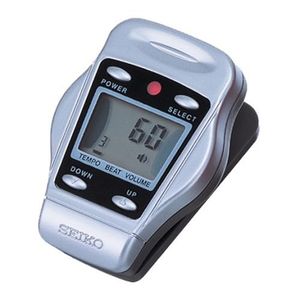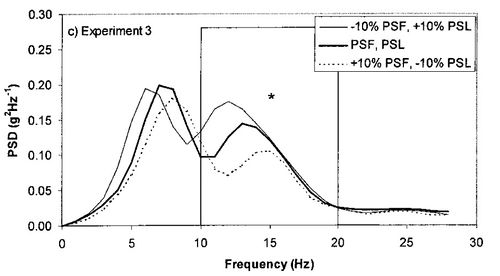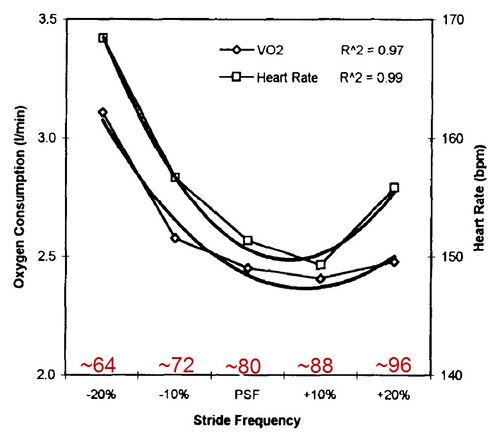Running Cadence

The single most important running tip I would give runners is to focus on their cadence (how often their feet touch the ground). Cadence is reasonably easy to modify and I believe it has more impact on running efficiency and injury than any other single thing.
Contents
1 Rationale behind Cadence
Jack Daniels[1] (the coach not the distiller) found that the slower the cadence, the longer you are in the air and the harder you land. Slow turn over means more impact, which causes more injury. If you take this to the extreme ('Reductio ad Absurdum'), imagine running with just one step per minute. You would have to leap high in the so that you would be in the air for 30 seconds; the landing force would probably break your legs. Scientific studies have backed this up, showing that an increased cadence reduces the impact forces of running[2][3] with the peak impact force at a cadence of 88 being just over half that that of a cadence of 64[4]. A higher cadence also reduces peak leg deceleration as well as peak impact forces in the ankle and knee joints[5]. Higher cadence is also related to a reduction in Overstriding[2]. A cadence of around 90 is also associated with greater running efficiency than lower or higher cadences[4]. Not surprisingly, a higher cadence reduces Delayed Onset Muscle Soreness and the associated weakness[6]. One study[7] showed that as people become tired, their cadence goes up, and with the higher cadence goes lower impact forces. Although a shorter stride/faster cadence results in less landing force, a longer stride length/lower cadence is associated with less of the impact force reaching the head[3]. The impact forces at a longer stride length are mostly absorbed by the knee[8].


2 Correct Cadence
So what should your cadence be? It seems that a turnover of 90 steps/minute is right for most people (180 steps/minute if counting both feet). To start off, check your cadence when you are running by counting how often your left foot touches the ground in a minute. If the number is 90 or higher, pat yourself on the back and go for another run. If the number is lower than 90, then you should look at changing your cadence. Your cadence does not have to be exactly 90, and is likely to change somewhat with your pace and terrain. A faster pace may have a higher cadence, as will up or down hill sections. My cadence now varies between 92 and 100 depending on pace. If your cadence was to vary between 88-92, you're doing well, though above 90 is preferable. A Good Running Watch will measure cadence using a Footpod.
3 Changing Cadence
There are several ways of measuring and changing your cadence.
- The first (and easiest) is to try to change your cadence and then count for a minute to check the results.
- The Best Running Watches have support for a Footpod that will display and record your cadence.
- The easiest way to modify your cadence is to run with a metronome, which sets the pace for you. An example of a small metronome would be the Seiko DM50 Metronome. I trained for several months with a similar device, and it helped me immensely. I found it rather loud, so I wrapped it in duct tape to quieten it down.
- You can also get a metronome app for a smartphone, but verify that the app is accurate as there are reports of some that do not keep time correctly.
- You can also Remixing Music For Running so that it is a higher tempo.
- Having the correct Arm Position is important for maintaining your cadence. If your arms are too low it will be quite difficult to keep your cadence high.
4 The adaptation process
To start off, the change in cadence will feel very strange. I remember adjusting my cadence, and felt like my shoes were tied together! My steps were so short and fast that things felt all wrong. It took several weeks to adjust, but when the adjustment did take place, my running improved dramatically. I credit cadence as a key part of my success in going from a 4+ hour marathon to sub-3 hour and is one of my Running Breakthroughs.
5 See Also
- Arm Position
- Cadence Q and A
- http://www.active.com/running/Articles/Stride_right_and_improve_your_run.htm Stride right and improve your run
6 References
- ↑ Jack Daniels Running Formula (second edition) Page 93-94, "Stride Rate"
- ↑ 2.0 2.1 BC. Heiderscheit, ES. Chumanov, MP. Michalski, CM. Wille, MB. Ryan, Effects of step rate manipulation on joint mechanics during running., Med Sci Sports Exerc, volume 43, issue 2, pages 296-302, Feb 2011, doi 10.1249/MSS.0b013e3181ebedf4, PMID 20581720
- ↑ 3.0 3.1 3.2 JA. Mercer, P. Devita, TR. Derrick, BT. Bates, Individual effects of stride length and frequency on shock attenuation during running., Med Sci Sports Exerc, volume 35, issue 2, pages 307-13, Feb 2003, doi 10.1249/01.MSS.0000048837.81430.E7, PMID 12569221
- ↑ 4.0 4.1 4.2 Hamill, J., T. R. Derrick, and K. G. Holt. "Shock attenuation and stride frequency during running." Human Movement Science 14.1 (1995): 45-60.
- ↑ TE. Clarke, LB. Cooper, CL. Hamill, DE. Clark, The effect of varied stride rate upon shank deceleration in running., J Sports Sci, volume 3, issue 1, pages 41-9, 1985, doi 10.1080/02640418508729731, PMID 4094019
- ↑ Ann V. Rowlands, Roger G. Eston, Caroline Tilzey, Effect of stride length manipulation on symptoms of exercise-induced muscle damage and the repeated bout effect, Journal of Sports Sciences, volume 19, issue 5, 2001, pages 333–340, ISSN 0264-0414, doi 10.1080/02640410152006108
- ↑ http://journals.lww.com/acsm-msse/Abstract/1999/12000/Plantar_loading_and_cadence_alterations_with.20.aspx Plantar loading and cadence alterations with fatigue
- ↑ TR. Derrick, J. Hamill, GE. Caldwell, Energy absorption of impacts during running at various stride lengths., Med Sci Sports Exerc, volume 30, issue 1, pages 128-35, Jan 1998, PMID 9475654